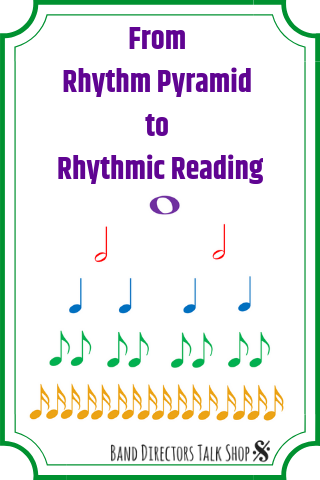
I’m guessing many of you use a rhythm pyramid. Great! It’s a nice visual that can help students see how notes relate to each other.
Example of a rhythm pyramid:
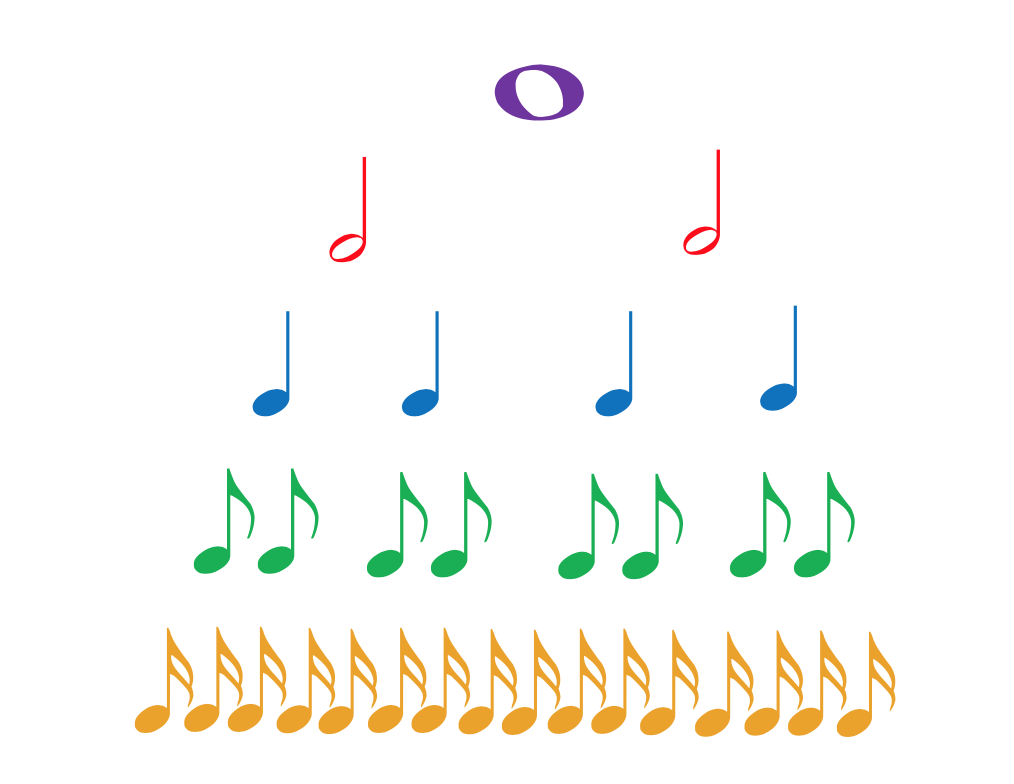
Traditional rhythm pyramid
But just drawing the rhythm pyramid on the board may not help students relate it to actually playing different rhythms or how the rhythms relate to the beat/foot tap.
Here are some ideas of how to transition students from the pyramid above to relating the pyramid to different rhythms.
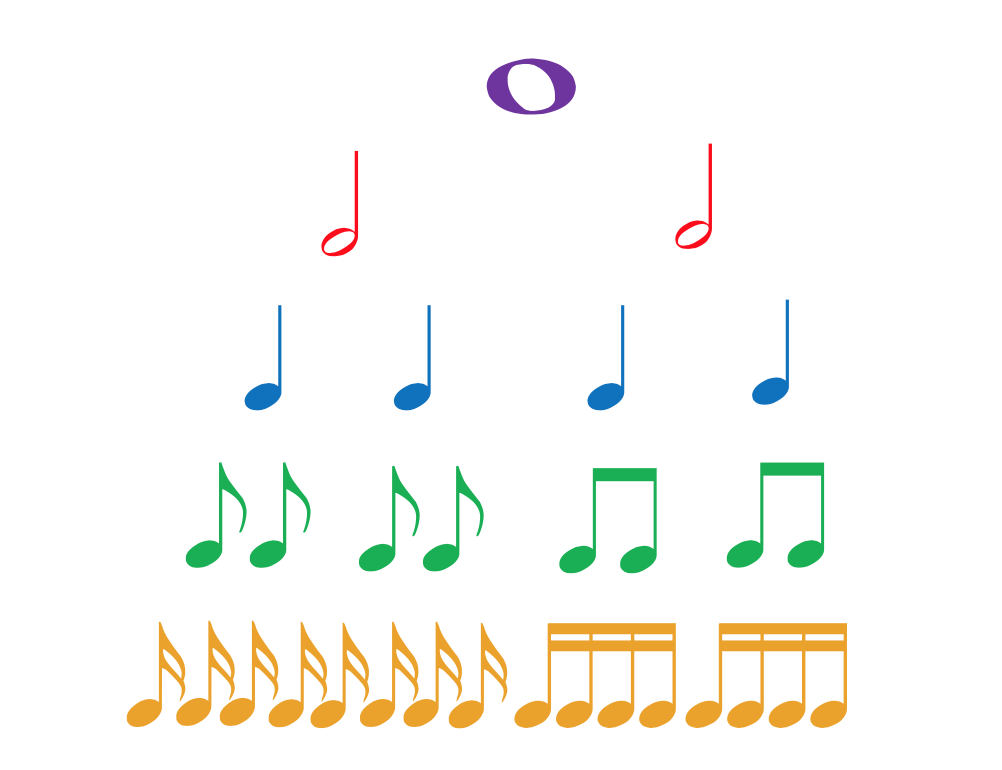
Beamed rhythm pyramid
This version shows the beamed eighth/sixteenth notes that students tend to see first. Also, students who have had elementary music foundations are often more used to seeing the beamed eighth and sixteenth notes and will make connections to prior learning.
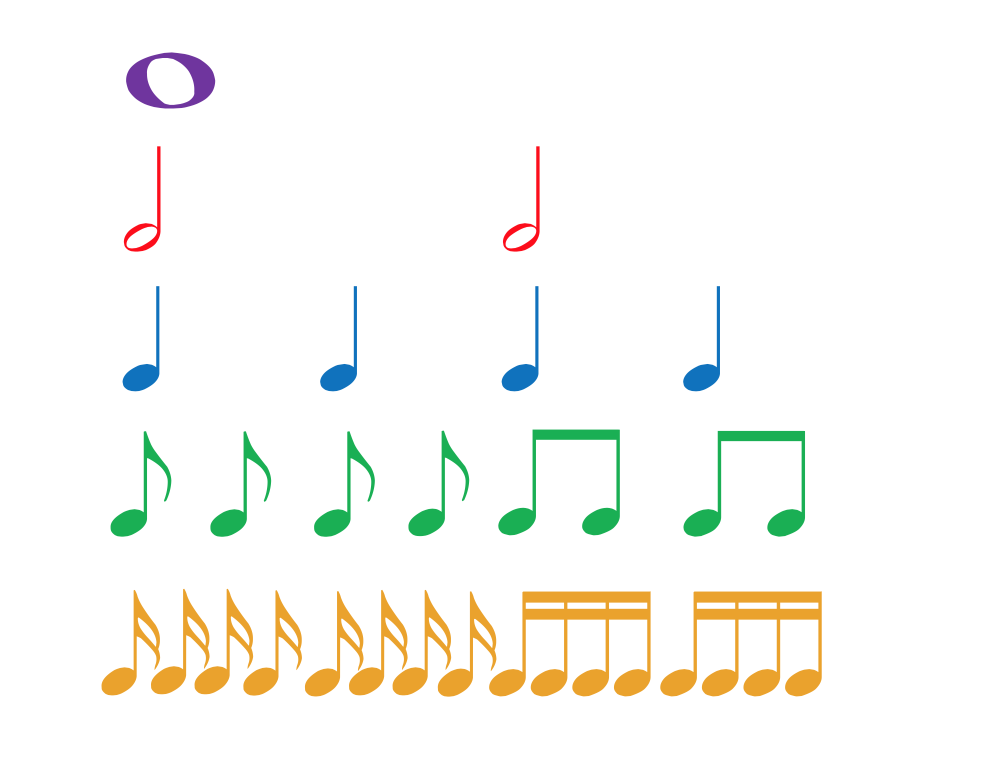
Rhythm chart
This next step shows students what these rhythms look like in a measure of 4/4 time. It also shows the duration of notes with better spacial relation.
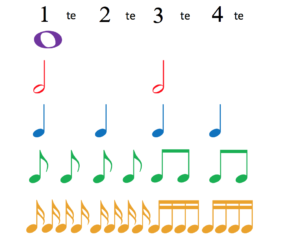
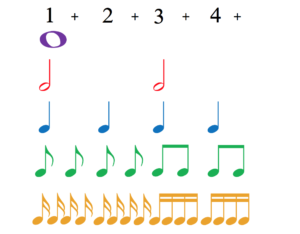
In this rhythm chart (shown with both traditional and Eastman counting) relates the notes to what we say when we count them.

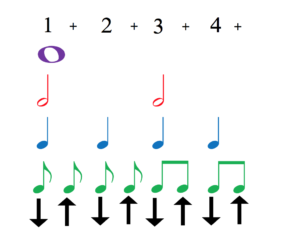
This final step adds the relationship of the foot tap to the rhythms. (Sixteenth notes have been removed to simplify for early counting.)
You can also give students quick worksheets to assess understanding:
If you would like to download all the images (including the worksheets) in this article as high quality PDFs you can purchase them HERE.
Hope these ideas help your students as they transition from the “theory” of music to the performance of music!
Related Reading:
Practical Strategies for Teaching Long-Term Music Reading Skills
“Out of the Box” Rhythm Exercises
Teaching Rhythm Logically
If you would like to receive our weekly newsletter, sign up here.
Don’t forget to like us on Facebook too!
Learn. Share. Inspire.
BandDirectorsTalkShop.com

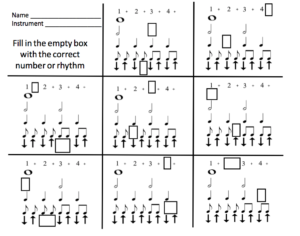
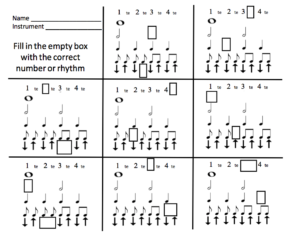
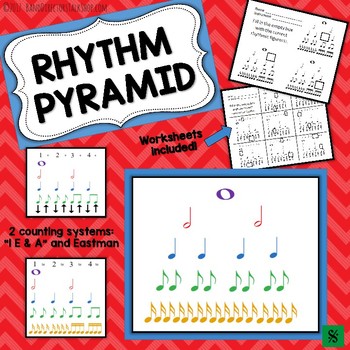

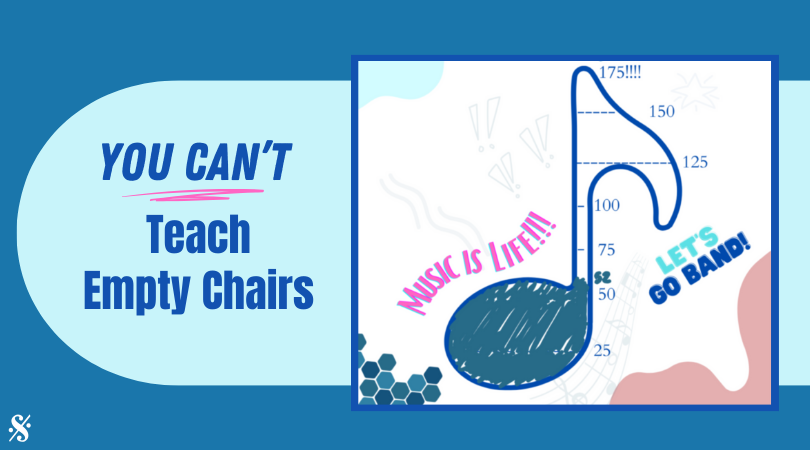
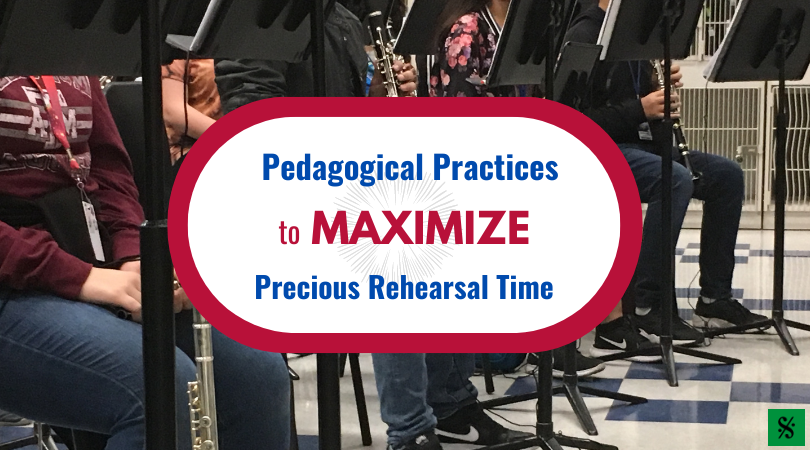

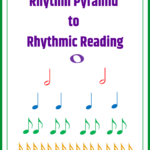
Leave a Reply
You must be logged in to post a comment.